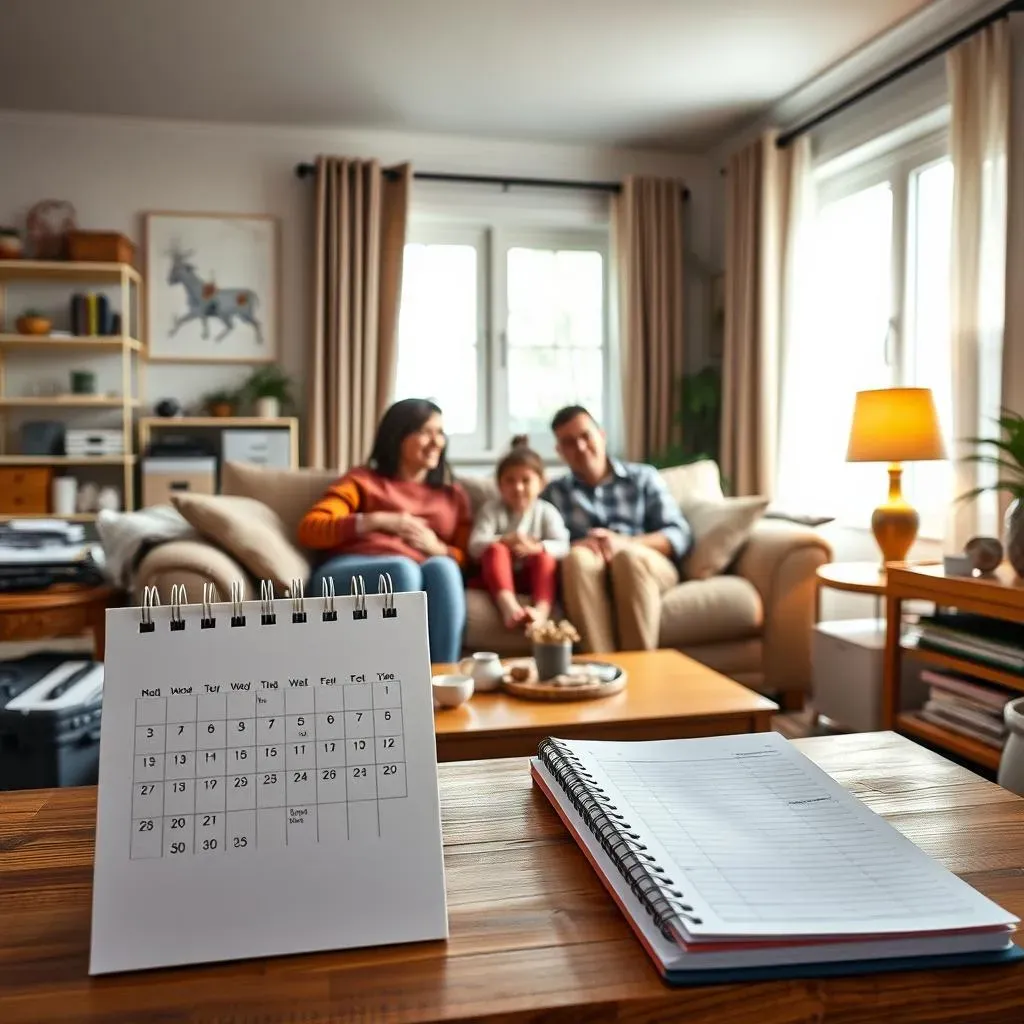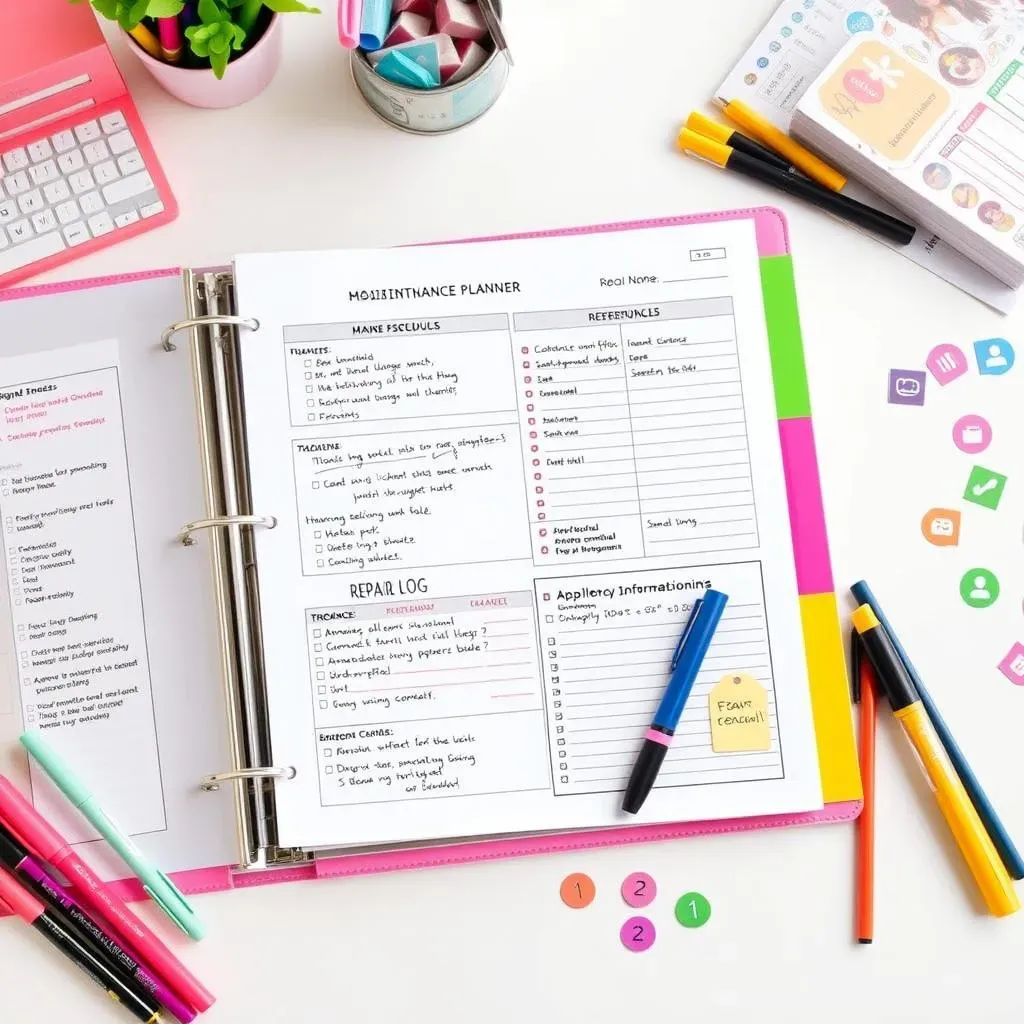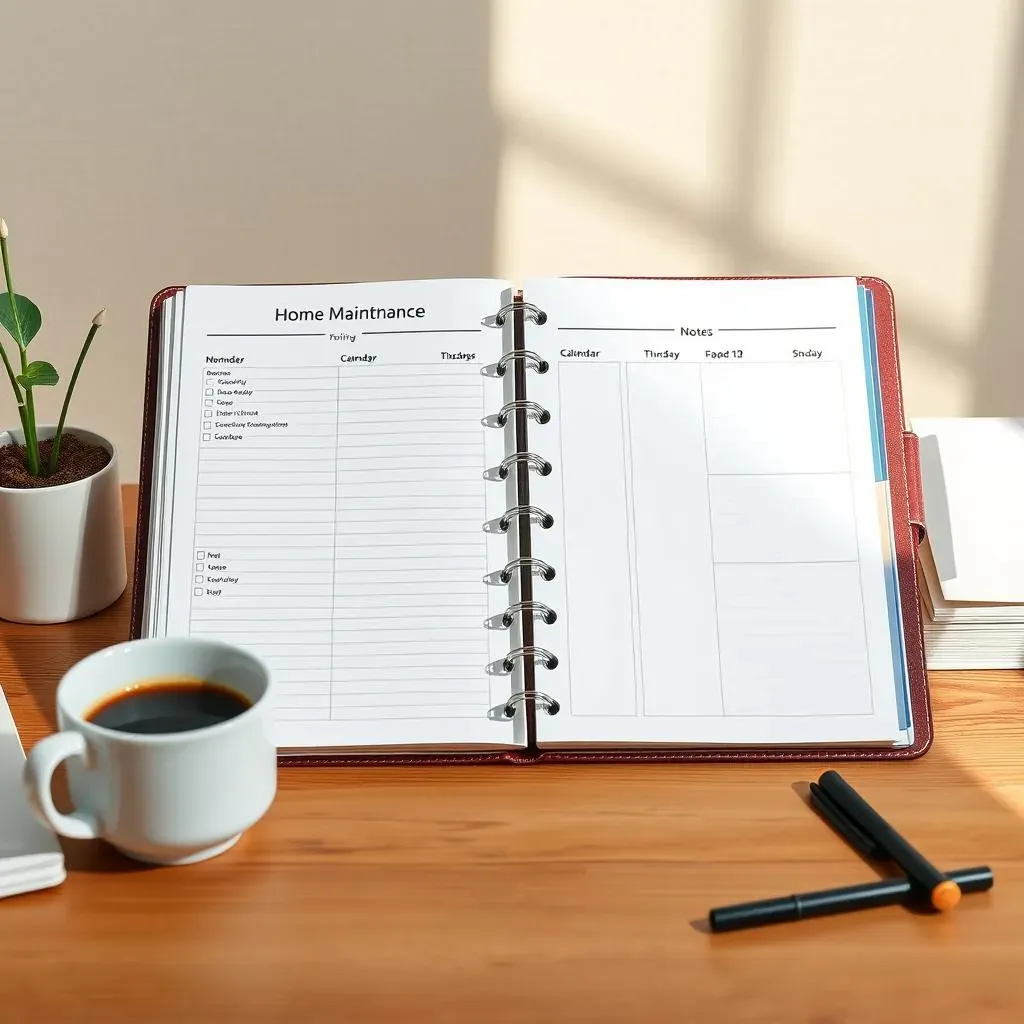Table of Contents
Ever feel like your house is a runaway train, with repairs and chores popping up faster than you can handle? You're not alone. Owning a home is awesome, but it also means keeping track of a million things, from leaky faucets to upcoming appliance checks. That's where a solid home maintenance planner comes to the rescue. Think of it as your home's personal assistant, keeping all the important details organized, so you don't have to stress. This isn't about becoming a super-organized robot; it’s about making homeownership less of a headache. In this article, we'll show you why every homeowner needs a home maintenance planner, how to set one up, and—most importantly—how to use it to keep your home running smoothly. We'll cover everything from basic checklists to managing those pesky repair receipts, so get ready to take control of your home, one organized step at a time. Ready to become the CEO of your home? Let's get started.
Why You Need a Home Maintenance Planner
Why You Need a Home Maintenance Planner
The Chaos Controller
Okay, let's be real, owning a home can sometimes feel like a never-ending to-do list. There's always something that needs fixing, cleaning, or checking. It's like a game of whack-a-mole, but instead of moles, it’s leaky faucets and clogged gutters. Without a home maintenance planner, you're basically just winging it, hoping you remember to change the furnace filter or schedule the annual chimney sweep. And trust me, that's a recipe for disaster, or at least a very expensive repair bill down the line. I remember when my dryer decided to quit on me, and it took me a week to figure out that I hadn't cleaned the vent in ages, a simple task that could have been avoided with a plan.
A home maintenance planner isn't just about being organized; it's about saving yourself time, money, and a whole lot of stress. It's like having a roadmap for your home, guiding you through routine tasks and helping you spot potential problems before they turn into major headaches. Think of it as your home's personal health check-up, keeping everything running smoothly and efficiently. It's not about being perfect, but about being proactive. It's about knowing when to change the air filters, when to check the roof, and when to call a professional. And honestly, that peace of mind is priceless.
Money Saver and Stress Reliever
Beyond preventing costly repairs, a home maintenance planner can actually save you money. By keeping track of warranties, you'll know exactly when your appliances are still covered, avoiding unnecessary service fees. Also, proactive maintenance can extend the lifespan of your home's systems, meaning you won't need to replace them as often. It is a win win situation. It is like getting free money, just by doing some planning. Plus, let’s face it, a well-maintained home is simply a happier home. You won't be constantly worrying about what's going to break next.
It's all about having a plan, and not living in a state of constant panic. It's about knowing that you've got things under control. Think of it as a way to be a good homeowner, not because you have to, but because you want to. It’s about taking pride in your space and making sure it's a safe, comfortable, and enjoyable place to live. And honestly, when you're not stressed about a leaky roof, you can spend more time doing the things you love. Plus, a well maintained home has more value, so its a win win situation.
Benefit | Why It Matters |
|---|---|
Prevents Costly Repairs | Catches small issues before they become big, expensive problems. |
Extends Lifespan of Systems | Regular maintenance keeps appliances and systems running longer. |
Saves Money | Avoids unnecessary service fees and premature replacements. |
Reduces Stress | Provides peace of mind knowing your home is well-maintained. |
Increases Home Value | A well-maintained home is more attractive to potential buyers. |
Setting Up Your Home Maintenance Planner
Setting Up Your Home Maintenance Planner
Gather Your Supplies
Alright, so you're convinced you need a home maintenance planner, great! Now, let's get down to business. First, you'll need to decide what kind of planner you want to use. Are you a digital whiz, or do you prefer the good old pen-and-paper approach? Either way works, just choose what fits your style. If you're going digital, there are tons of apps and templates out there. Or, if you're like me and love the feel of paper, grab a binder, some dividers, and a bunch of blank pages. Don't forget pens, highlighters, and maybe some stickers if you're feeling fancy. The key here is to make it something you'll actually want to use. I know, I know, it sounds a bit like kindergarten, but trust me, making it visually appealing will help you to stay motivated.
Next up, think about what sections you want to include in your planner. This is where you can really customize it to your home's specific needs. I like to have sections for things like "Maintenance Schedules," "Repair Logs," "Appliance Information," and "Emergency Contacts." You might also want sections for things like "Cleaning Checklists," "Landscaping," or "Home Improvement Ideas." The goal here is to create a system that makes sense to you and that covers all the important aspects of your home. Don't be afraid to get creative and add your own personal touch. It's YOUR planner, after all. And hey, if you mess up, no biggie, just tweak it until it works for you.
Creating Your Sections
Now that you have your supplies, let's start building out your sections. For each section, think about what kind of information you'll want to keep track of. For example, in your "Maintenance Schedules" section, you might want to include a monthly checklist of tasks like changing air filters, testing smoke detectors, and cleaning gutters. You could even break it down further into daily, weekly, and yearly tasks. In your "Repair Logs" section, you'll want to note down the date of each repair, what was fixed, who did the work, and how much it cost. This will be super helpful when you're trying to remember when you last had something fixed or if you're trying to compare quotes for a new repair.
Don't forget about those boring but essential sections like "Appliance Information" and "Emergency Contacts." In the "Appliance Information" section, keep track of model numbers, warranty information, and purchase dates. This will be a lifesaver when you need to order parts or schedule repairs. In the "Emergency Contacts" section, include numbers for your plumber, electrician, HVAC technician, and, of course, your local emergency services. It's always better to be prepared, and having these numbers readily available can save you precious time in a crisis. Once you have all your sections set up, take a step back and admire your work. You've just taken a big step toward becoming a more organized and efficient homeowner.
Section | What to Include |
|---|---|
Maintenance Schedules | Monthly, weekly, and yearly task checklists. |
Repair Logs | Dates, descriptions, costs, and contact information for repairs. |
Appliance Information | Model numbers, warranty info, and purchase dates. |
Emergency Contacts | Plumber, electrician, HVAC, and emergency services numbers. |
Using Your Home Maintenance Planner to Stay on Top of Things
Using Your Home Maintenance Planner to Stay on Top of Things
Making it a Habit
Okay, so you've got this awesome home maintenance planner, but now what? The real trick is making it a habit. It's not enough to just set it up and then let it gather dust on a shelf. You need to actually use it, regularly. I like to set aside a specific time each week to review my planner and make sure I'm on track. For me, it's Sunday afternoons, with a cup of coffee, and some chill music. But you can pick whatever time works best for you. The key is to be consistent. Think of it like brushing your teeth, you do it every day without thinking, because it's a habit. That's what you want your home maintenance routine to become. Don't worry about being perfect, just focus on making it a regular part of your life.
One thing that helps me is to break down my tasks into smaller, more manageable chunks. Instead of looking at a huge list of things to do, I focus on one or two tasks each day. That way, it doesn't feel so overwhelming. For example, one day I might check the smoke detectors, and another day I might clean out the fridge. It's all about making it easy for yourself to stay on top of things. Also, don't be afraid to adjust your planner as you go. If something isn't working for you, change it! The goal is to create a system that works for you, and that makes maintaining your home less of a chore, and more of a smooth routine. Remember, this is supposed to make your life easier, not harder.
Regular Check-Ins and Adjustments
Another important aspect of using your home maintenance planner is to regularly check in on your progress. This means not only making sure you're completing your scheduled tasks, but also looking for ways to improve your system. Are there any sections that you're not using? Are there any tasks that you're consistently forgetting? These are all signs that you might need to make some adjustments. I like to do a quarterly review of my planner, where I look back at the past few months and see what's working and what's not. It's a good opportunity to tweak things and make sure that my planner is still meeting my needs. It's like a software update, but for your home maintenance routine.
Also, it is crucial to be flexible with your plan. Life happens, and sometimes things come up that throw off your schedule. That's okay. The important thing is to not let it derail your entire system. If you miss a week of maintenance, just pick it up again the following week. Don't beat yourself up about it. The whole point of having a planner is to help you, not to stress you out. So, be kind to yourself, stay consistent, and remember that even a little bit of planning can go a long way in keeping your home in great shape. Just like any good routine, it takes time, but once you get the hang of it, you will wonder how you ever lived without it. It is like having a superpower for your home.
Tip | Description |
|---|---|
Set a Regular Time | Choose a specific day and time each week to review your planner. |
Break Down Tasks | Divide large tasks into smaller, more manageable chunks. |
Regularly Review | Check your planner quarterly to see what's working and what's not. |
Be Flexible | Adjust your plan as needed, and don't worry about occasional setbacks. |
